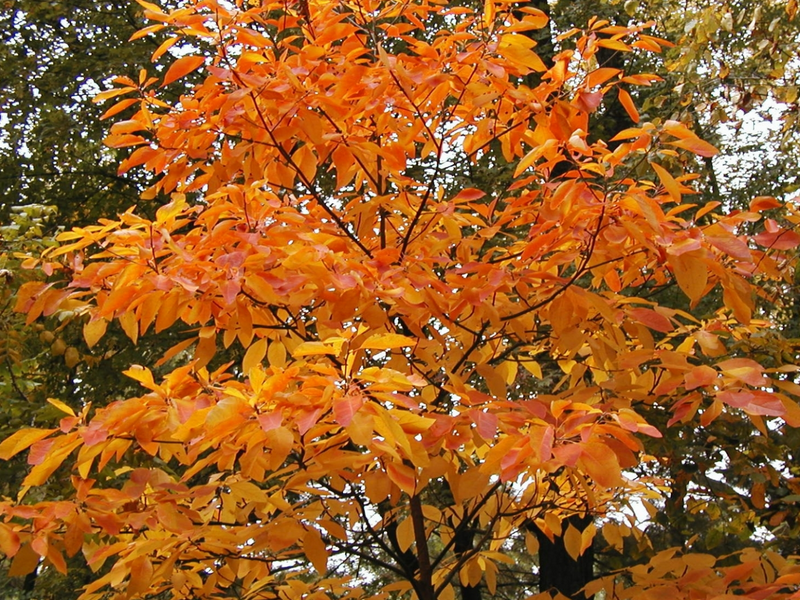Sassafras Tree
Sassafras albidum
Click here to download a PDF of this plant information page (for printing).

Sun Exposure: Full Sun, Part Sun
Season of Interest: Sring, Summer, Fall
Bloom Time: June
Bloom Color: Gold
Height: 30 to 60 ft.
Spread: 25 to 40 ft.
Spacing: 45 ft.
Water Needs: Average
Maintenance: Prune for shape when young
Soil Type: Clay, Loam, Sandy, Rocky
Soil pH: Acidic, Neutral
Soil Drainage: Well drained
Pests: Sassafras borer
Diseases: Southern fungus, Laural wilt
Wildlife: Birds, Small mammals, Bees, Butterflies

Description:
Sassafras is a native tree worth adding to your landscape for several reasons. It has pretty, aromatic spring flowers and its leaves turn a vibrant yellow, red, and orange in fall. Sassafras leaves are aromatic when crushed and very tasty. The bark and branches of the tree are also fragrant when bruised or cut. The tree is very tough - so tough, in fact, that it is frequently used in restoration sites with depleted soils.
The tree is very tough - so tough, it is frequently used in restoration sites with depleted soils. This makes it a great choice for naturalized plantings or creating screens. Sassafras is dioecious, with female and male flowers on separate trees. Sassafras is a food source for white-tailed deer, woodchucks, black bears, and rabbits. Many species of birds, including wild turkeys and mockingbirds, eat its bluish-black berries. For more information see:
plants.ces.ncsu.edu/plants/sassafras-albidum
Care and Growing Tips:
Sassafras is a low-maintenance tree. The only regular care it requires is to remove root suckers as they appear. Sassafras grows well in both full sun and part shade, ideally in patchy sun, growing as an understory tree. Depending on the location, the canopy looks different. In full sun, it's broad and leafy whereas in understory locations, it has a single layer of umbrella-shaped branches.
Sassafras grows well in rocky clay soil, but the tree does not tolerate soggy soil. Young trees need to be watered until they are established. During the first growing season, if it doesn't rain, water once a week. Sassafras is tolerant of a wide range of climate conditions, from subzero temperatures to humidity and heat. This tree does not need fertilizer and it does not require much pruning other than removing weak branches in late winter.
Because of its large taproot, sassafras is difficult to transplant. Container-grown nursery trees have the best chances of survival. As a tree that is native to North America, sassafras is generally not affected by many pests and diseases. Two invasive pests from Asia, Japanese beetles and the ambrosia beetles, can transmits laurel wilt disease. The other serious pest is the sassafras borer.